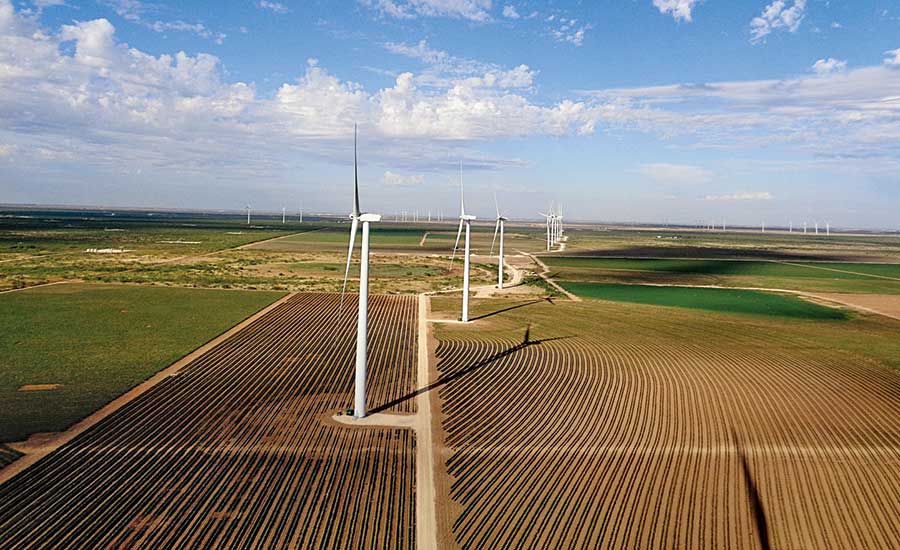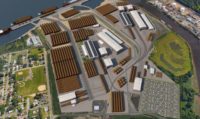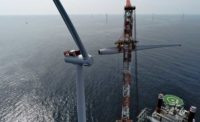Chicago-based wind-generation developer Invenergy and GE Renewable Energy last month made public the construction start in Oklahoma of a 2,000-MW wind farm—set to be the largest in the U.S. and the second largest in the world.
Just before that announcement, Southwestern Electric Power (Swepco) and Public Service Co. of Oklahoma—two subsidiaries of utility American Electric Power (AEP)—said they would pay the $4.5-billion cost of the Wind Catcher project and its dedicated extra-high-voltage power line, which will run 350 miles from the Oklahoma panhandle to Tulsa. Swepco will invest $3.2 billion and own 70% of the project, with its peer utility to invest $1.3 billion. The wind farm is expected to come on line in mid-2020, and Invenergy will operate it for five years. Louisiana regulators eased rules to allow the plan to move ahead, but they and Texas, Arkansas and Oklahoma regulators must approve the wind farm purchase once construction finishes.
The wind power is expected to save utility customers $7 billion over 25 years, AEP said. The Ohio firm “is moving to a cleaner energy future, driven by new technologies,” said CEO Nicholas Akins. It plans to add another 7,300 MW of new renewable-energy sources to its portfolio through 2030. AEP operates in 11 states and owns more transmission lines, including high voltage, than any other U.S. utility.
To take maximum advantage of the federal production tax credit before it declined in 2017, project construction began last December. During construction, the project will support 4,000 direct jobs annually. Further, it will generate electricity from 800 GE turbines, each 2.5 MW, which are designed to enhance siting efficiency and allow for higher energy production and more reliability, the company said.
Invenergy will hire multiple specialty contractors to work on the project, says Patrick Whitty, the developer’s chief of staff. Blattner Energy, Avon, Minn., has worked on the project’s civil infrastructure since October. Contractors for remaining scopes have not yet been secured. Layout and micro-siting have begun, as have engineering studies and preliminary electrical design, Whitty told ENR. Invenergy will manage EPC work.
AEP selected Quanta Services, Houston, to provide EPC for the single-circuit, high-voltage power line and two substations. The contract for the 765kV-line, worth just over $1 billion, is Quanta’s largest-ever project award, says Kip Rupp, investor relations vice president. Power-line construction is set to begin in late 2018. “Quanta has built more high-voltage electric transmission infrastructure in North America than any other specialty contractor,” he says. The award sparked investor interest, as it was not reflected in Quanta’s Aug. 3-announced quarterly results, which showed a total backlog of $9.2 billion, down 6% year to year and off 1% since last quarter. The award “helps provide multiyear visibility for Quanta’s electric transmission business,” said Credit Suisse industry analyst Jamie Cook.
Construction began this year on Quanta’s previously largest contract, the Ft. McMurray West 500-kV line in Alberta, valued at just under $1 billion, says Rupp. Further, the firm is working with Eversource, one of New England’s largest energy providers, on an undisclosed-value proposal, submitted in July to Massachusetts, for a 192-mile high-voltage line to transport hydroelectric power to the U.S. from Canada, with a total project value of $1.6 billion.






Post a comment to this article
Report Abusive Comment